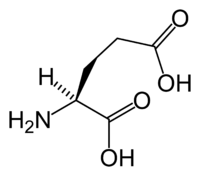
Radiosensitivity enhancement by Co‐NMS‐mediated mitochondrial impairment in glioblastoma
Sign Up to like & getrecommendations! Published in 2020 at "Journal of Cellular Physiology"
DOI: 10.1002/jcp.29774
Abstract: We investigated the radiosensitizing effects of Co‐NMS, a derivative of nimesulide based on a cobalt carbonyl complex, on malignant glioma cells. In the zebrafish exposed to Co‐NMS ranging from 5 to 20 μM, cell death and… read more here.
Keywords: radiosensitivity enhancement; mediated mitochondrial; impairment; nms mediated ... See more keywords

Synthetic alpha-synuclein fibrils cause mitochondrial impairment and selective dopamine neurodegeneration in part via iNOS-mediated nitric oxide production
Sign Up to like & getrecommendations! Published in 2017 at "Cellular and Molecular Life Sciences"
DOI: 10.1007/s00018-017-2541-x
Abstract: Intracellular accumulation of α-synuclein (α-syn) are hallmarks of synucleinopathies, including Parkinson’s disease (PD). Exogenous addition of preformed α-syn fibrils (PFFs) into primary hippocampal neurons induced α-syn aggregation and accumulation. Likewise, intrastriatal inoculation of PFFs into… read more here.
Keywords: synuclein; dopamine; neurodegeneration; nitric oxide ... See more keywords

The isothiocyanate sulforaphane prevents mitochondrial impairment and neuroinflammation in the human dopaminergic SH-SY5Y and in the mouse microglial BV2 cells: role for heme oxygenase-1.
Sign Up to like & getrecommendations! Published in 2022 at "Metabolic brain disease"
DOI: 10.1007/s11011-022-00990-x
Abstract: Sulforaphane (SFN) promotes protective effects in different cell types. Nonetheless, it remains to be clarified by which mechanism SFN exerts benefits in mammalian cells. Mitochondria are a major source of adenosine triphosphate (ATP) and reactive… read more here.
Keywords: sfn; bv2 cells; mitochondrial impairment; heme oxygenase ... See more keywords

Orexin-A exacerbates Alzheimer’s disease by inducing mitochondrial impairment
Sign Up to like & getrecommendations! Published in 2020 at "Neuroscience Letters"
DOI: 10.1016/j.neulet.2020.134741
Abstract: Alzheimer's disease (AD) is a progressive neurodegenerative disease which is characterized by the accumulation of amyloid-β peptide (Aβ). Orexin-A is a neuropeptide which has been reported to participate in the pathogenesis of AD. Thus, we… read more here.
Keywords: orexin; microscopy; alzheimer disease; app ps1 ... See more keywords

Involvement of oxidative stress and mitochondrial mechanisms in air pollution-related neurobiological impairments
Sign Up to like & getrecommendations! Published in 2019 at "Neurobiology of Stress"
DOI: 10.1016/j.ynstr.2019.100205
Abstract: Background Vehicle exhaust emissions are known to be significant contributors to physical and psychological stress. Vehicle exhaust-induced stress and associated respiratory and cardiovascular complications are well-known, but the impact of this stress on the brain… read more here.
Keywords: behavioral deficits; stress; svee; vehicle exhaust ... See more keywords

Alpha-synuclein oligomer-selective antibodies reduce intracellular accumulation and mitochondrial impairment in alpha-synuclein exposed astrocytes
Sign Up to like & getrecommendations! Published in 2017 at "Journal of Neuroinflammation"
DOI: 10.1186/s12974-017-1018-z
Abstract: BackgroundDue to its neurotoxic properties, oligomeric alpha-synuclein (α-syn) has been suggested as an attractive target for passive immunization against Parkinson’s disease (PD). In mouse models of PD, antibody treatment has been shown to lower the… read more here.
Keywords: accumulation; selective antibodies; alpha synuclein; mitochondrial impairment ... See more keywords

Mitochondrial impairment and repair in the pathogenesis of systemic lupus erythematosus
Sign Up to like & getrecommendations! Published in 2022 at "Frontiers in Immunology"
DOI: 10.3389/fimmu.2022.929520
Abstract: Nucleic acid autoantibodies, increase type I interferon (IFN-α) levels, and immune cell hyperactivation are hallmarks of systemic lupus erythematosus (SLE). Notably, immune cell activation requires high level of cellular energy that is predominately generated by… read more here.
Keywords: lupus erythematosus; mitochondrial impairment; systemic lupus; pathogenesis ... See more keywords

Age-Related Mitochondrial Impairment and Renal Injury Is Ameliorated by Sulforaphane via Activation of Transcription Factor NRF2
Sign Up to like & getrecommendations! Published in 2022 at "Antioxidants"
DOI: 10.3390/antiox11010156
Abstract: Age is one of the major risk factors for the development of chronic pathologies, including kidney diseases. Oxidative stress and mitochondrial dysfunction play a pathogenic role in aging kidney disease. Transcription factor NRF2, a master… read more here.
Keywords: age related; kidney; factor nrf2; age ... See more keywords

Escalating Bi-Directional Feedback Loops between Proinflammatory Microglia and Mitochondria in Ageing and Post-Diagnosis of Parkinson’s Disease
Sign Up to like & getrecommendations! Published in 2023 at "Antioxidants"
DOI: 10.3390/antiox12051117
Abstract: Parkinson’s disease (PD) is a chronic and progressive age-related neurodegenerative disease affecting up to 3% of the global population over 65 years of age. Currently, the underlying physiological aetiology of PD is unknown. However, the… read more here.
Keywords: disease; parkinson disease; directional feedback; mitochondrial impairment ... See more keywords